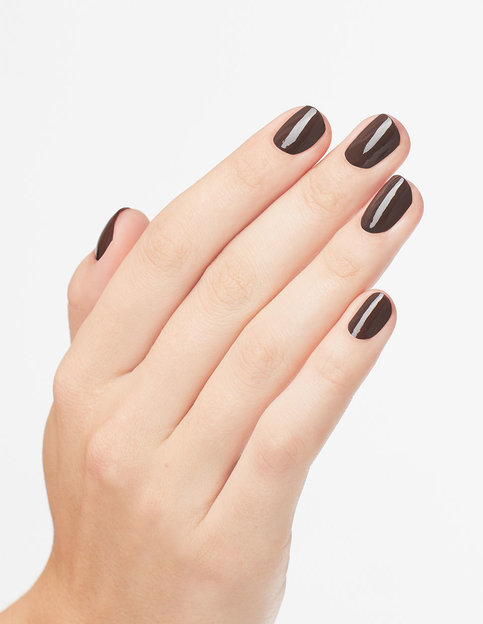Hosting a private event or party can be an exhilarating experience, and one of the best ways to leave a lasting impression on your guests is through expertly crafted themed cocktails. When hiring a professional mixologist, you open the door to a world of creativity and flavor that can perfectly match your event’s theme. Whether you’re aiming for a lively carnival atmosphere or the glitzy allure of a casino night in Miami, themed cocktails are the perfect touch to make your gathering unforgettable. In this post, we’ll explore some fantastic carnival-themed cocktails and casino-inspired drinks that a professional mixologist can whip up to elevate your next private event.
Introduction to Themed Cocktails
Themed cocktails are more than just drinks; they’re a way to immerse your guests in the ambiance and mood of your event. By aligning your cocktail menu with the theme, you create a cohesive experience that engages all the senses. Whether it’s the vibrant colors and playful flavors of a carnival or the sophisticated and glamorous vibes of a casino night, themed cocktails can set the tone for your party and make it a memorable occasion.
Benefits of Hiring a Professional Mixologist
A professional mixologist brings a level of expertise and creativity that is hard to match.
Expert Craftsmanship
Professional mixologists have extensive knowledge of flavors, ingredients, and techniques, ensuring every cocktail is crafted to perfection.
Customized Menus
They can create bespoke cocktail menus that align with your event’s theme and your guests’ preferences, ensuring a unique and personalized experience.
Entertainment Factor
Watching a skilled mixologist at work can be a form of entertainment, adding an interactive element to your event. This can keep guests engaged and create a memorable experience.
Stress-Free Hosting
With a professional handling the drinks, you can focus on enjoying your event and mingling with your guests without worrying about the details of drink preparation and service.
Carnival-Themed Cocktails
Carnivals are synonymous with joy, excitement, and a vibrant atmosphere. Incorporating these elements into your cocktail menu can elevate the festive spirit of your event. A professional mixologist can create an array of carnival-themed cocktails that not only taste delightful but also captivate your guests with their whimsical presentations. Here are a few concepts that can bring the carnival experience to life through your drinks.
Ferris Wheel Fizz
The Ferris Wheel Fizz captures the essence of a carnival ride: fun, exhilarating, and colorful. This cocktail is typically a blend of gin, elderflower liqueur, fresh lemon juice, and simple syrup, topped with club soda. The addition of a tuft of cotton candy as a garnish not only adds a playful element but also infuses the drink with a sweet, nostalgic flavor as it dissolves. This drink is perfect for welcoming guests and setting a festive tone right from the start.
Cotton Candy Martini
The Cotton Candy Martini combines the sophisticated elegance of a martini with the playful sweetness of cotton candy. This cocktail is visually stunning and interactive. The mixologist places a tuft of cotton candy in the glass and pours the cocktail over it, causing the candy to dissolve in a delightful burst of color and flavor. This transformation not only entertains guests but also evokes memories of childhood trips to the carnival, making it a conversation starter.
Popcorn Old Fashioned
An innovative twist on the classic old fashioned, the Popcorn Old Fashioned incorporates the buttery, savory flavors of popcorn into a traditional bourbon-based cocktail. This can be achieved through popcorn-infused simple syrup or bitters, creating a unique flavor profile that surprises and delights. The garnish of actual popcorn adds a playful touch, making it a perfect drink for those who appreciate a sophisticated cocktail with a fun twist.
Candy Apple Spritz
Inspired by the iconic carnival treat, the Candy Apple Spritz combines the crispness of apple cider with the effervescence of prosecco, complemented by a hint of caramel-flavored vodka. This cocktail not only delivers a refreshing taste but also evokes the sweet and tart flavors of a candy apple. A rim of caramel and a slice of fresh apple as garnish add to the thematic presentation, making it an ideal drink for a carnival-themed event.
Funnel Cake Colada
A playful take on the classic pina colada, the Funnel Cake Colada infuses the tropical flavors of coconut and pineapple with a hint of vanilla and cinnamon, reminiscent of the beloved carnival funnel cake. The creamy texture and rich flavor profile of this cocktail make it a decadent treat. Topped with whipped cream and a dusting of powdered sugar, this drink is sure to be a hit among guests who have a sweet tooth.
Carousel Cooler
The Carousel Cooler is a vibrant, multi-layered drink that captures the colorful and dynamic spirit of a carnival carousel. Featuring layers of fruit juices, grenadine, and blue curaçao, this cocktail is both visually appealing and refreshingly tasty. The layers of colors create a striking visual effect that mimics the bright lights and spinning colors of a carousel. Served in a tall glass with a rainbow-colored straw, this drink is perfect for capturing the essence of a carnival.
Clown’s Delight
Inspired by the playful and fun nature of clowns, the Clown’s Delight cocktail is a mix of bright, fruity flavors and a splash of fizz. Ingredients like watermelon, lime, and mint are muddled together and topped with sparkling water. This drink is both refreshing and visually appealing, often garnished with colorful candies or fruit slices. Its lively presentation and flavor make it an ideal choice for a carnival-themed event.
Fire Eater’s Flame
The Fire Eater’s Flame is a spicy and bold cocktail that pays homage to the daring fire-eaters of the carnival. Combining spicy tequila, mango puree, lime juice, and a dash of hot sauce, this drink packs a punch. The rim of the glass can be coated with chili powder and sugar for an extra kick. The fiery flavors and striking presentation make it a memorable addition to any carnival-themed cocktail menu.
Juggler’s Julep
A twist on the classic mint julep, the Juggler’s Julep incorporates a variety of fresh herbs like basil, mint, and thyme for a complex, refreshing flavor. Bourbon, simple syrup, and a mix of these herbs are muddled and served over crushed ice. The mix of herbs creates a dynamic flavor profile that reflects the skill and balance of a juggler. This cocktail is perfect for guests who enjoy a fresh and aromatic drink.
Strongman’s Sipper
Inspired by the strength and resilience of carnival strongmen, the Strongman’s Sipper is a robust and flavorful cocktail featuring dark rum, coffee liqueur, and a hint of vanilla. This rich and bold drink is garnished with a coffee bean and a twist of orange peel, creating a striking presentation. The deep flavors and strong character of this cocktail make it an excellent choice for guests who appreciate a more intense drink.
Creating the Perfect Atmosphere
To complement your themed cocktails, it’s important to create an atmosphere that matches your event’s theme.
Decorations
Use themed decorations like carnival tents, casino tables, or Miami-inspired palm trees and neon lights to transform your space. These visual elements can set the stage for your event and immerse your guests in the theme.
Music
Choose a playlist that aligns with your theme. Upbeat carnival tunes can energize your guests, while sophisticated jazz or electronic music can enhance the glamorous feel of a casino night.
Dress Code
Encourage your guests to dress in theme to enhance the overall experience. This adds to the visual impact and helps everyone feel part of the celebration.
Lighting
Use lighting to set the mood. Colorful lights can capture the playful essence of a carnival, while dim, elegant lighting can create the sophisticated ambiance of a casino event.
Tips for Working with a Professional Mixologist
To make the most of your professional mixologist, consider the following tips:
Consultation
Have a detailed consultation to discuss your event theme, guest preferences, and any special requests. This ensures that the mixologist can tailor their services to your specific needs.
Tasting Session
Arrange a tasting session to sample and finalize your cocktail menu. This allows you to experience the flavors and presentation firsthand, ensuring they meet your expectations.
Supplies
Ensure you have all the necessary supplies and ingredients, or coordinate with your mixologist to provide them. This includes glassware, garnishes, and any special ingredients required for your chosen cocktails.
Timing
Schedule your mixologist’s arrival and setup time to ensure everything is ready before your guests arrive. This helps avoid any last-minute rush and ensures a smooth start to your event.
Conclusion
Hiring a professional mixologist for your private event or party can transform a simple gathering into an extraordinary experience. With expertly crafted carnival-themed cocktails and casino-inspired drinks, you can create a vibrant and memorable atmosphere that your guests will talk about long after the event is over. Whether you’re aiming for the fun and excitement of a carnival or the sophisticated glamour of a Miami casino night, themed cocktails are the perfect way to elevate your event and make it truly special. So, when planning your next private event, consider the magic that a professional mixologist can bring to your celebration. Cheers to unforgettable moments and delightful drinks!










